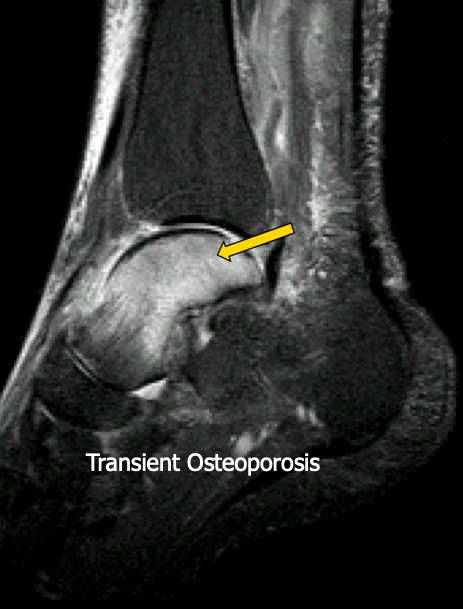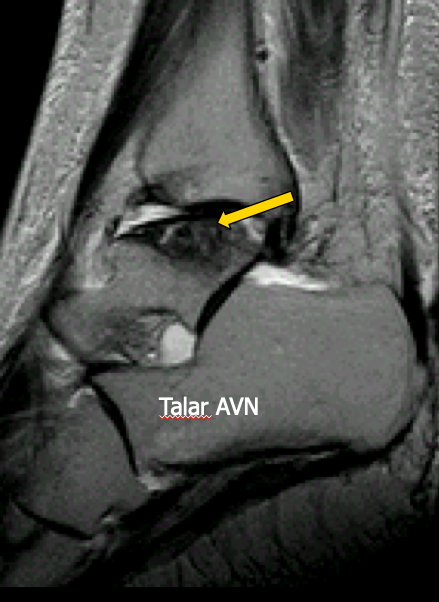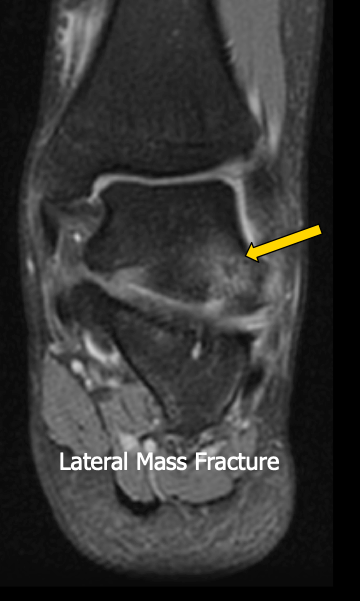Conditions that affected the talar dome included
• Shear injuries during ankle inversion or eversion
• Subchondral insufficiency fracture, which may itself be due to
• Transient marrow oedema
• Osteochondritis dissecans
• Avascular necrosis
Of these conditions, the most common are osteochondral shear injuries. These occur as a consequence of eversion or inversion,
where the medial or lateral corner of the dome shears across the tibial plateau , medial or lateral malleolus.
The most subtle injuries are a little more than cartilage fissuring with some low-grade subchondral oedema,
the more severe injuries involve very able sized fragment of cartilage, subchondral plate and bone.
The diagnosis is best made on coronal MRI.
The imaging goal also includes an assessment of stability.
Fluid clefts deep to the lesion and cyst formation are signs of an unstable lesion.
With complete see shear injuries, fragment may separate from the underlying bone and become loose within the joint. The most common location for the injury is the superolateral corner.
Osteochondritis dissecans is more common in the superomedial corner.
It tends to be a larger lesion occurring in younger patients
without necessarily history of trauma.
Most lesions are unstable, but particular features that confirm instability are a
fluid cleft extending more than 3 mm beneath the fragment,
cyst formation with a similar distribution
The lesion may be unstable, but remain in its anatomical location.
This is termed loose in-situ
With its convex configuration, the dome of the talus is prone to transient marrow oedema
just like the femoral head, humeral head and capitellum.
Convex surfaces are also more prone to avascular necrosis but this is considerably less common.
Transient marrow oedema results in increased signal with a rather patchy distribution.
It may become complicated by a subchondral insufficiency fracture
which is seen as a low signal line paralleling the subchondral plate.
Fluid sensitive MRI is better it demonstrating the oedema however
T1 images are better at showing the fracture line.
Subchondral insufficiency fractures can occur for other reasons other than a marrow oedema syndrome,
particularly in older patients with a background osteopenia.
Many subchondral fractures heal however
some resultant collapse of the subchondral plate leaving a residual deformity which, in the end stages, can be difficult to differentiate from osteochondritis dissecans,
osteochondral shear injury other than by it is more common location centrally.



